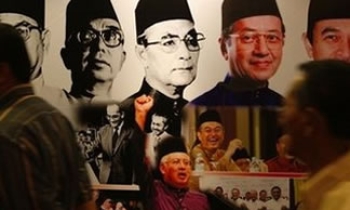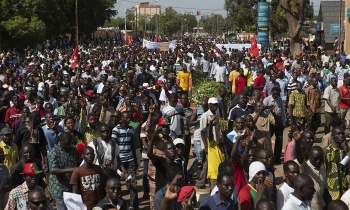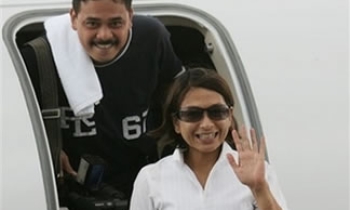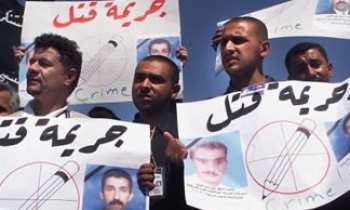KABUL, Afghanistan, Feb. 8 -- Like tens of thousands of protesters this week, the crowd that gathered Wednesday in the southern Afghan town of Qalat came to speak out against cartoons in European newspapers mocking the prophet Muhammad.
But the protest soon took a much different direction. Afghan demonstrators began chanting against the hiring of Pakistanis to do reconstruction work. Pakistanis in the crowd began chanting against the United States and tried to force their way into the local U.S. military base. When the crowd encountered Afghan security forces, a suspected Taliban member fired a weapon. Afghan police returned fire. By the time the smoke cleared, at least three protesters were dead and more than a dozen people were injured.
"They forgot all about the cartoons," said Gulab Shah Alikheil, the regional governor's spokesman.
Furor over the caricatures of Islam's most revered figure may have triggered the wave of recent demonstrations among Muslims worldwide. But as the protests escalate, they are morphing into an opportunity for individuals, groups and governments to push agendas that often have little or nothing to do with defending Islam. Rallies ostensibly held for religious reasons have become chances to vent economic frustrations, settle local scores or gain political leverage.
"We have condemned the cartoons and said those responsible should be brought to justice," said Mulwi Sayed Imam Mutawali, deputy head of a religious council in the southern Afghan city of Kandahar. "But there are some enemies of Afghanistan that want to take advantage of this issue. They just want to advance their own aims."
Mutawali said his council initially supported the protests but has decided to demand they stop because they have been hijacked by people with ulterior motives. At least 10 people have been killed in Afghan protests over the past three days.
"There's a sincere feeling of being wounded" by the cartoons, said Paul Fishstein, director of the nonprofit Afghanistan Research and Evaluation Unit. "But there's also the chance for certain forces to make mischief, to take advantage of a situation where people are upset."
The list of suspected ringleaders using the controversy to their own benefit here is a long one, from al Qaeda and the Taliban to local militia commanders and former governors. All are believed to have something to gain by steering otherwise peaceful protests into melees.
"Ordinary Afghan citizens who are protesting do not walk around with hand grenades in their pockets," said a U.S. military spokesman, Col. James Yonts, referring to a protest Tuesday in which demonstrators lobbed grenades into a NATO base. "That leads us to believe there is something else behind this."
Afghanistan is not the only place where motives are in question.
The autocratic Syrian government was widely believed to be behind protests Saturday that resulted in the burning of the Danish and Norwegian embassies in Damascus. In Lebanon, where the Danish Embassy burned a day later and Christian landmarks were targeted in violence, local news organizations reported that Syrian agents had protesters bused in to help stir up trouble.
Sarkis Naoum, a columnist for the Lebanese newspaper An Nahar, said interest groups in Lebanon also had incentive to see the cartoon protests spiral out of control.
"The local ones would like to be back as rulers of the country. And certain regional powers here would like to exert the same influence -- or more -- than they had before," he said Tuesday by telephone from Beirut. "It is difficult to convince many Lebanese that people aren't trying to use this for their own purposes."
In Indonesia, the Islamic Defenders Front, a radical Muslim organization, said the cartoons have made organizing easier.
"The moment has unified us," said the group's East Java chairman, Habib Abdurrahman Bahlaida. "The West had a bad plan to pull Muslims apart. Instead, they are pulling us together." The group, which claims 5 million members, attacked the Danish and U.S. consulates in the city of Surabaya on Monday.
But such groups are a tiny minority in Indonesia, where about 90 percent of the 240 million inhabitants are Muslims. Some moderate leaders on Wednesday appealed for calm and said the protests were being exploited by extremist groups.
"Do not go overboard and get trapped into a situation that can be used by elements bent on painting an image of Indonesia's Islam as an intolerant, rigid and anarchic society," said Din Syamsuddin, a leader of Muhammadiyah, an Islamic group that claims 30 million members, the Reuters news agency reported.
In Pakistan, too, conservative Muslim groups appeared to be using the uproar over the cartoons to gain leverage. In Peshawar, the capital of North-West Frontier province, several thousand people rallied Tuesday in a protest led by the provincial government, which is headed by an alliance of radical religious parties.
"We must at least throw out the ambassador of Denmark," said Qazi Hussain Ahmad, leader of Jamaat-e-Islami, the largest religious party in Pakistan.
Rifaat Hussain, a Pakistani academic who is executive director of the Sri Lanka-based Regional Center for Strategic Studies, said the cartoons were being used as a tool to apply pressure on Pakistan's president, Gen. Pervez Musharraf, who is perceived by many religious elements as being too close to the West.
"They want the protests to gain momentum and gain intensity so they can use them to undermine Musharraf," Hussain said from Colombo, the Sri Lankan capital.
In Afghanistan, President Hamid Karzai was among the first to condemn the cartoons. For several days after rallies erupted elsewhere in the world, few other Afghans seemed to notice. But that changed quickly: Each day since Monday, Afghanistan has been the scene of especially violent demonstrations.
Experts here say religious motivations have played a key role. But so have local political issues, including personal disputes between factional leaders.
Following deadly protests on Monday in Laghman province, in eastern Afghanistan, authorities are looking into the possibility that the protests were instigated by allies of a militia commander killed late last year under mysterious circumstances. In the western city of Herat, where about 8,000 protesters gathered Tuesday, authorities suspect the influential hand of Ismail Khan, a former governor who is still bitter about his removal from office.
And in the northern city of Meymaneh, a local commander who has lost power since NATO troops arrived was believed to be behind protests Tuesday in which three people died as they attempted to storm the alliance's base.
"The warlords are looking for opportunities," said Nader Nadery, leader of the Afghanistan Independent Human Rights Commission in Kabul. "And this is a good opportunity to motivate people."
Correspondent Ellen Nakashima in Jakarta and special correspondents Kamran Khan in Karachi, Pakistan, and Javed Hamdard in Kabul contributed to this report.









